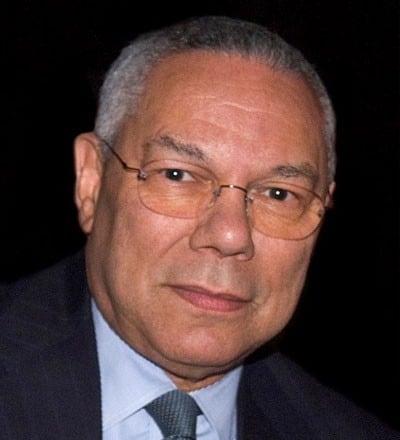The advantages of an analytics culture
Making the shift a reality requires lots of preparation and communication
By Daniel Teachey, SAS Insights Editor
If you’ve attended a technology conference, you’ve probably seen a slide talking about people, process and technology. Speakers typically trot out this tried-and-true trio to explain how solving business problems takes more than just installing software. More accurately, it involves a culture of analytics, which involves the people using the software and managing the data. The processes that create and cultivate data. The technology and how it’s adopted.
At a recent SAS Global Forum Executive Conference, General Colin Powell, former Secretary of State, kicked things off with a review how technology has influenced his career. While “technophile” doesn’t spring to mind when you think of the former chairman of the Joint Chiefs of Staff, he did get an MBA from George Washington University in the 1970s, with a focus on data processing. He drew chuckles from the audience by mentioning a decades-old ability to program in Fortran and COBOL.
Powell talked about some of the ways that that he used technology to help people do more, thereby strengthening the organization. For example, when Powell joined the State Department in 2001, they lacked an adequate IT infrastructure to meet a global organization.
Powell knew that technology was the first step to transforming the State Department. In two years, the department implemented 44,250 computers, putting technology on each employee’s desk.
The reason for purchasing that much hardware wasn’t simply to make every desk look more modern. They had to access – and make decisions on – information spread across continents. Powell said that when he joined the department, information was viewed as “bulk stuff sitting around – until we found a way to make sense of it.”

Setting the stage for culture change
Powell’s story of the State Department’s IT overhaul was just one of the many sessions at the SAS Executive Conference that focused on how organizations had to adapt and change. Later in the day, Aiman Zeid, global consultant at SAS, led a set of customer panels focused on the topic of culture and how to change an organization’s DNA to meet new challenges.
In his book, Business Transformation: A Roadmap for Maximizing Organizational Insights, Zeid discusses how to go beyond the rallying cry of “let’s change the culture” and actually do the work. During the SAS Executive Forum, Zeid hosted panels asking leading companies how they have changed the way they manage people, processes and technology – and ultimately their culture.
The key takeaway: real change requires rethinking how you do things. And with big data and its associated opportunities and challenges at the door, organizations need to go beyond changing job roles or adjusting how invoices are managed. They need to adjust how they view, value and monetize information.
David Asiela, global business director for business insights and analytics at Dow Chemical, works within the CIO’s organization to find new ways to manage and analyze data at Dow. In one of the panel sessions, Asiela talked about transforming the company from the inside. How? He looked outside of Dow.
“[When examining new initiatives] we’ll do some formal benchmarking to try to sell that program,” Asiela said. “But, we’re finding that we want to do one-to-one benchmarking visits with a variety of companies. So, we chose to talk to people that we thought were ahead of us.
“We talked to other companies like Apple, eBay, Cisco and Microsoft. They weren’t in our industry, so they were free to share how they did things. We modeled some of things that we do on the things we heard.”
Another company, Wyndham Exchange and Rentals, also has a team that examines different parts of the organization to find ways to innovate. Jeremy TerBush, vice president of global analytics, explained that he looks across eight business units in his organization to find things that work – and that can be replicated in other areas. For example, if they are looking at dynamic pricing or revenue management, they start by evaluating the business unit’s maturity in that area.
“We use a maturity model where there are several different levels of maturity,” Terbush said. “We’re able to look at different business units and assign a maturity for them. That’s something that executives can understand, and it helps us show how things are improving over time.”
Making culture change a reality
While every business leader knows change is inevitable, that doesn’t mean that change is easy. Asiela noted that “fear of change” is a reality, but Dow addresses this through continual communication with the groups to help them understand what’s changing and why.
At Wyndham, TerBush noted that there is often more than one entry point to culture change. Sometimes, the leader of the business unit will see the value to a strategy shift and wholeheartedly support it. Other times, TerBush and his team has to take a more grassroots approach.
“If they’re not ready, we always start with somebody in middle management or an analyst in the unit,” TerBush said, noting that there are often change agents within the organization already. “We just have to give them some tools, let them know what we want to see and let them be an advocate for the program.”
For Dow, Wyndham and a host of other companies, culture change is more than just an overused buzzword. It’s an ongoing part of the business, allowing them to adapt to market conditions and find new ways to make sense of their data.
Read More
- Read Aiman Zeid's new book: Business Transformation: A Roadmap for Maximizing Organizational Insight
- Learn how to create an IT strategy built for today's complex technology environment.
- Return to Analytics Insights.